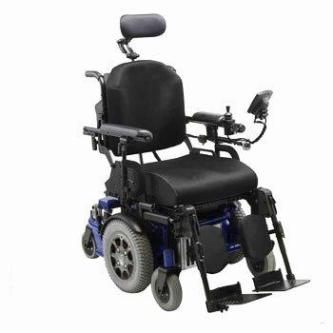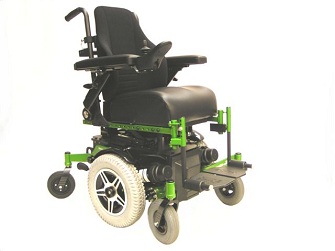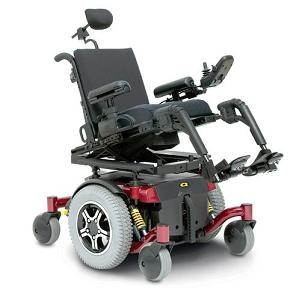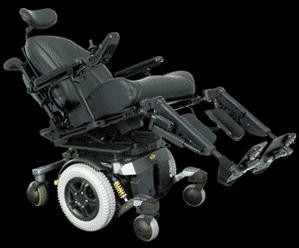More Details
Frame
* The frame and power base of the Atigra is made from mild and bright steel and aluminium
* Specifically designed and labelled tie down positions for wheelchair restraint straps are located at the front and rear of the base frame, when transporting the wheelchair in vans and buses
* Frame colors: there are 9 colour options: Sensuous Red, Lime Twist, Purplelicious, Sapphire Blue, Liquid Silver, Midnite Black, Royal Blue, Burnt Orange or Kiwi Green
Power Seat Option
* Power assist tilt in space, power backrest recline, power elevating legrests and power seat raise is optional
* There are two angle ranges of tilt in space, to select from
* If required, the system can be changed by a technician in the field, from one range to the other without any changes in hardware
Seat
* The power base has been designed to allow for adjustability of the seat width, seat depth, backrest angle and backrest height
* Seat depth adjustment is built into the frame, requiring a spanner to complete the task. Adjustment to the seat depth only, does not require a change to the upholstery nor any other part of the chair
* The seat width is manually adjustable. This feature is built into the frame and requires Allen keys to complete. Adjustment to the seat width requires a change to the backrest bracing bar and different upholstery
* The T2 seat system can be supplied with the wheelchair, with the choice of a padded seat, a metal seat pan or a padded seat board, which can be used as a base for a commercial or custom made cushion
* A padded T2 seat system backrest or commercially made backrest can be supplied with the chair. The cane widths are set to accept the American made backrests which are supplied in Imperial (inch) widths. The backrest canes will also easily accept custom made backrests, including a slung backrest if required
Upholstery
* The T2 seat uses a firm base foam, with a visco elastic overlay, covered with black Dartex
* The upholstery is washable
Backrest
* The backrest is attached to the frame by clamps which can be loosened to adjust the backrest to the appropriate height
* The backrest angle can be manually adjusted
Headrest
* An angle and height adjustable headrest can be mounted to the backrest rigidizer bar
* This is an accessory, not included as standard
Armrests
* The armrests are height adjustable and removable
* The armrest pad can be moved forwards or backwards to suit the user and comes with side panels
* Armrests can be customised if required
Legrest
* The legrests can be swung away and removed as required
* The legrests are height adjustable
* The T2 seat uses heavy duty legrest hangers
Footplates
* The aluminium heavy duty footplates can be oriented longitudinally or laterally
* They are adjustable in height to accommodate for leg length and can be set at a range of angles with options to accommodate for varying ankle positions. They allow for forwards and backwards movement; side to side (lateral) movement; up and down (dorsiflexion and plantarflexion) movement and inversion or eversion movements
Wheels
* Pneumatic drive wheels are 30mm x 80mm (3" x 14")
Castors
* Front and rear castors are 50mm x 150mm (2" x 6")
Controls
* The Atigra uses the Dynamic DX2 or the JX2 power wheelchair control system as standard
* It can be mounted on either side of the wheelchair
* The DX2 has a large LCD screen, displaying the mode in use. The on/off button has audible feedback. The buttons to control the speed and mode selection are slightly raised and have a tactile feature
* The unit is programmable via Dynamic tools (Wizard software and DX-HHP)
* The joystick supplied with the wheelchair is a standard short post unit
Batteries
* 2 x 38 amp hour gel batteries are recommended by the supplier
* A separate 6 - 8 amp battery charger is supplied, which plugs into the front of the chair
Motor
* PM90, high torque 2 pole motors, with a GB-12 gearbox are used in the Atigra
* The motor can be disengaged by releasing the bracket on the drive wheel hubs
* The wheelchair has been designed to climb a 50mm step
Considerations
Transport Accessibility
The space allowed on public transport for carrying mobility equipment is an area of 1300mm by 800mm.
Wheelchair spaces
All new Sydney buses feature special 'kneeling suspension' and a ramp to provide easy access for less mobile passengers.
There are spaces for two wheelchairs on the new buses. These will accommodate most manual and electric wheelchairs with maximum length 1250mm, maximum width 750mm, maximum turning circle1500mm and maximum weight 200kg.
For safety reasons, passengers in wheelchairs are advised to face the back of the bus, bracing their wheelchair against the side of the space, applying the brakes and securing the seat belt of the wheelchair.
Wheelchair accessible buses display a blue and white wheelchair sign on the front of the bus, and on the easy access door.
Occupied Wheelchair in a Car
A person sitting in a wheelchair within a car or van requires certification and RTA approval for the wheelchair and occupants restraint system where the wheelchair or occupant are restrained to the vehicle structure. RTA approval is not required for a postural support, such as a harness, that is only attached to the wheelchair and not to the vehicle.
Wheelchair Restraints
When transporting a person in a wheelchair in a car or van, both the occupant and the wheelchair require an RTA approved restraint system. The wheelchair and the occupant need to be separately secured to the vehicle itself.
RTA approval is not required for a postural support, such as a harness, that supports the user in the wheelchair but is not part of the vehicle restraint system.
The use of a headrest is not legally required but strongly recommended. Easily detachable, folding headrests which fit a wheelchair with standard push handles are available. Refer to section Wheelchair, Scooter, Cushions, ramps / Postural Supports - Seating System: Restraint+ Head+Back+Seats.
Place Of Manufacture
Western Australia
Price Guide
Contact supplier for prices
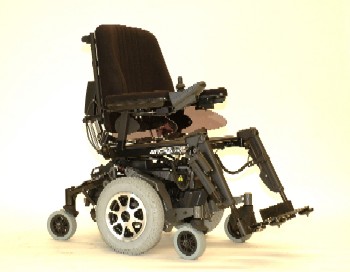

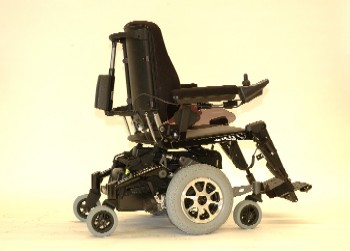

 subscribers
subscribers 



